#1770s jewellery
Text
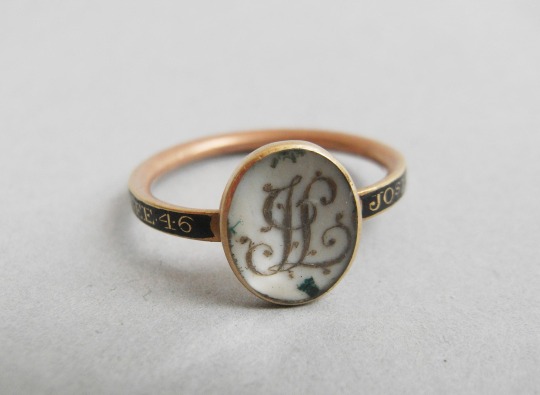
Gold Mourning Ring with Inlaid Hair, 1774, French.
The British Museum.
#mourning#1774#1770s#1770s mourning#gold#ring#1770s jewellery#1770s ring#hair jewellery#the British museum
5 notes
·
View notes
Text
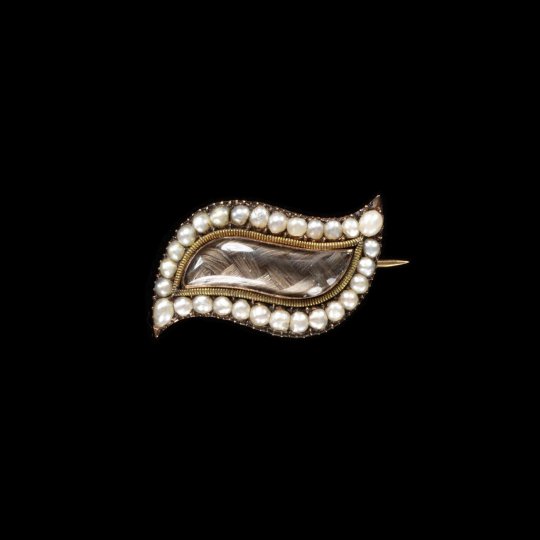
Brooch with woven hair, 1775-1800
From the Victoria and Albert Museum
#brooch#jewellery#hair jewellery#fashion#fashion history#1775#1800#1770s#1780s#1790s#1800s#1700s#18th century#19th century#georgian
18 notes
·
View notes
Photo
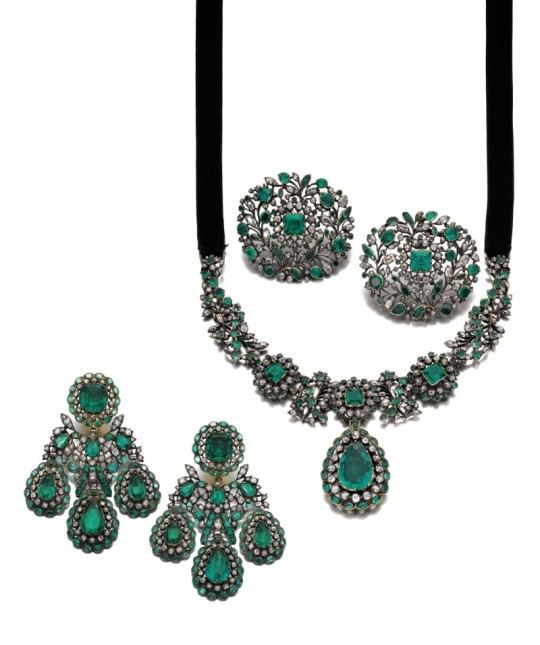
Jewellery set, 1770.
35 notes
·
View notes
Text
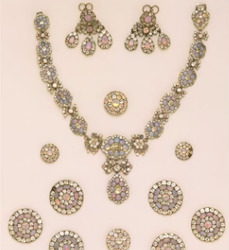
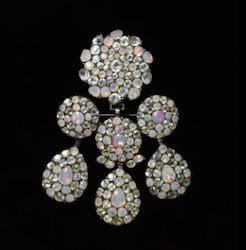
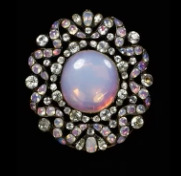
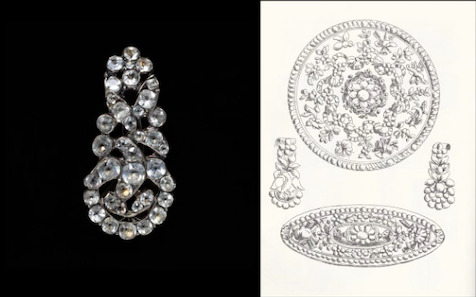
“Jewels" in opaline and glass pastes (circa 1770-80) presented in “A History of Jewellery: Bedazzled (part 4: Rococo Elegance)” by Beatriz Chadour-Sampson - International Jewellery Historian and Author - for the V&A Academy online, February 2024.
#conferences#inspirations bijoux#opale#opaline#strass#diamant#XVIIIe siècle#ChadourSampson#V&AAcademy#Victoria&AlbertMuseum
0 notes
Text
I went to a museum and was inspired (a lot more than this but most of the photos are really bad), everything was so intricately decorated and I want to incorporate that into my art.
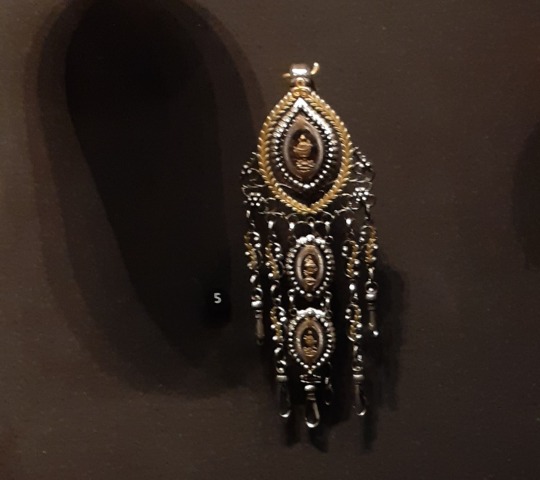
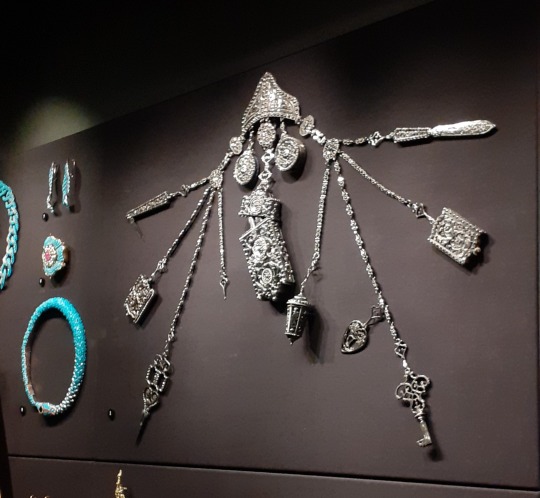
Chatelaine (1770 and 1850), to me Isolde has the vibe of a woman who'd wear a chatelaine, the stylish way to carry your spell components.

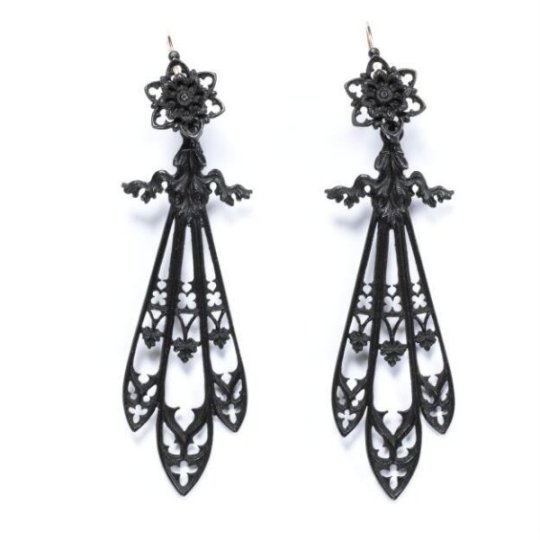
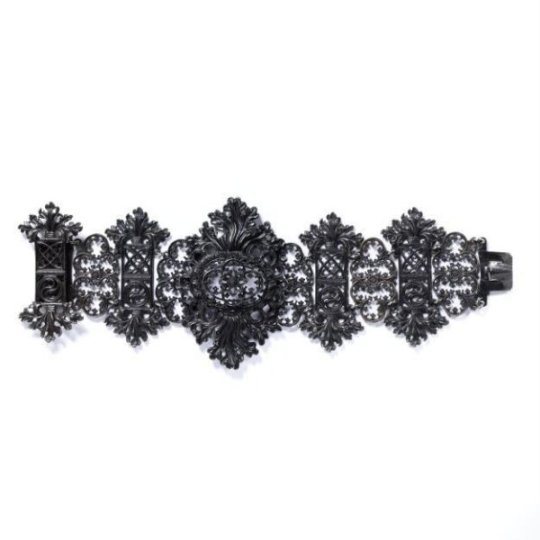

Berlin ironwork jewellery (1810–1830) my photo is terrible so some good ones from the museum website, but it's so goth, I don't have a specific character in mind I just thought it was really cool.
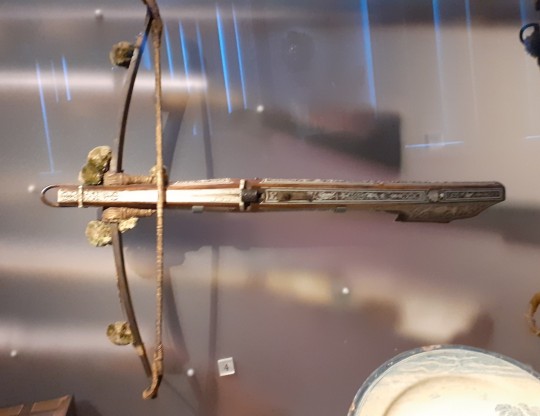


Crossbows (1600s?) (Detail picture is inlay on guns) with decorative antler inlay. Rook's crossbow has a tree motif with depictions of a rook and a raven flying together.
#art ref#not actually art#it's unlikely future art will have intricate detail because#1) i draw really small and 2) i mostly cannot be bothered
1 note
·
View note
Photo

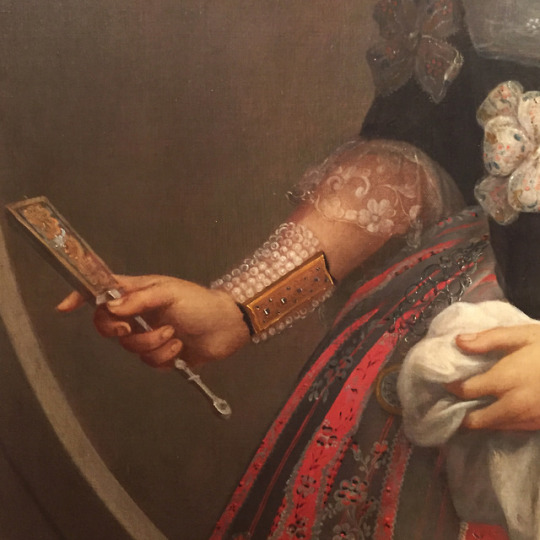

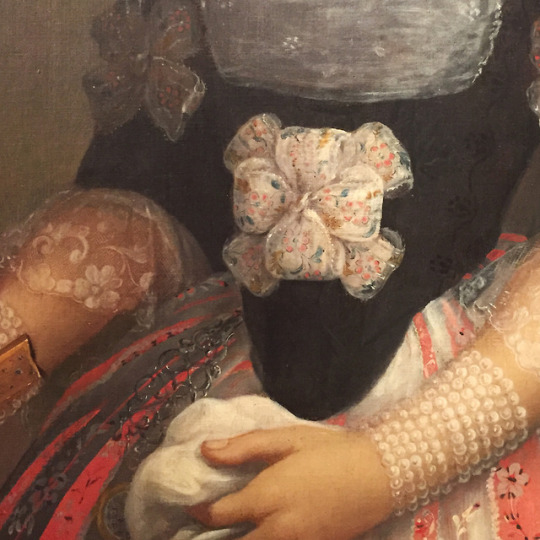
PORTRAIT:
“Civilian portrait of Doña María Ana Gertrudis Cabrera y Solano”, ca 1770, Juan Gil Patricio Morlete y Ruiz.
Before becoming a nun at the capuchin convent of San Felipe de Jesús in Mexico CIty, we can easily say that María Ana was quite fashionable: her jewellery (gold necklace and pearl bracelets), a chatelaine, fan, handkerchief, black top and stripes petticoat (fuck yeah that combo), and of course a see-through chemisette, a chiqueador and those bows. Not even I get those bows. LOL.
She was the daughter of our dearest painter Miguel Cabrera, and don’t be surprised that the portrait is not by him, since he died in 1768.
#art#18th century#portrait#woman#black#pink#white#bows#jewellery#pink womenswear#black womenswear#chiqueador#juan gil patricio morlete y ruiz#new spain#spanish colonies#nueva españa#novohispano#mexico#mexico city#1770s#Miguel Cabrera
27 notes
·
View notes
Photo
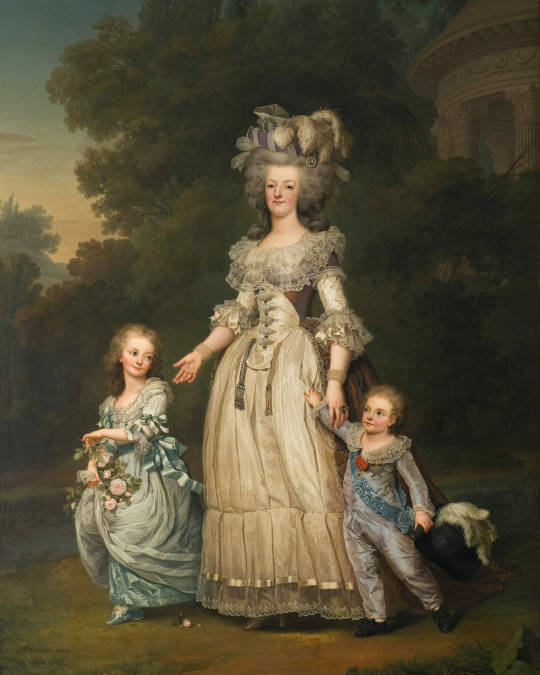
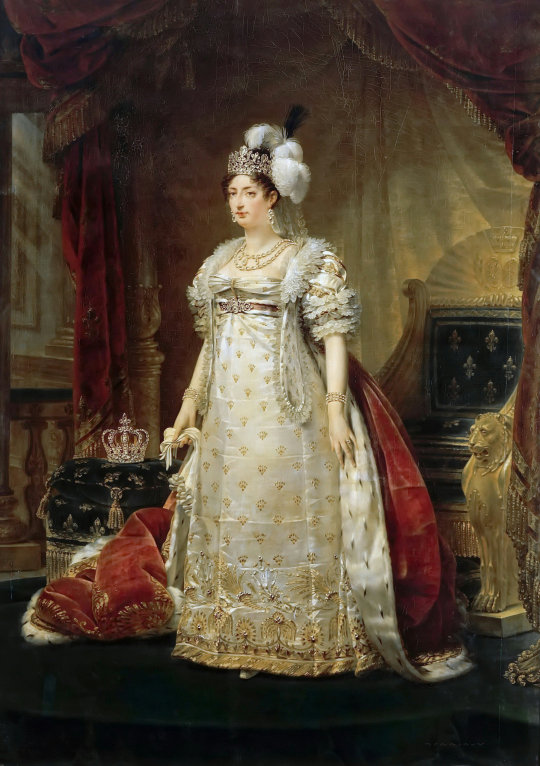


The Historic Marie-Antoinette pair of Diamonds Bracelets
In 1776, Marie Antoinette could not resist a pair of diamonds bracelets. They were bought from Charles Auguste Boehmer, a German jeweller of French protestant background who had recently moved to Paris.
While stationed in Brussels after the outbreak of the French Revolution, Count Mercy-Argenteau (the ambassador of the Austrian Empire to France from 1770 to 1790) received, on 11 January 1791, a letter from the Queen – then a prisoner in the Tuileries Palace in Paris – announcing that a wooden chest would be sent to him for safekeeping. The chest finally arrived in Brussels on 7 March 1791. Mercy-Argenteau stored it unopened and safe for the next couple of years.
The contents of the wooden chest were sent to the Imperial Treasury in Vienna, where it was kept safe for its legitimate owner – the surviving daughter and sole heir of Marie Antoinette, Madame Royale, Duchesse of Angoulême (1778–1851). She received these jewels in January 1796 upon her arrival in Austria.
Madame Royale died childless on 19 October 1851. In her original will, dated 1 July 1851, the entirety of her jewellery collection – including Marie Antoinette's jewels – was to be split in three lots of similar value, bequeathed to her three nieces and nephews: the Count of Chambord, the Countess of Chambord and the Duchess of Parma.
The pair of bracelets was subsequently listed in the December 1860 will of the Duchess of Parma (1819–1864) amongst the jewels bequeathed to her son, Duke Robert of Parma (1848–1907), citing its provenance from Marie Antoinette.
The bracelets were again mentioned with this royal provenance in the penultimate line of the inventory, illustrated overleaf, after the death of the Duchess of Parma in March 1864.
In the illustrated inventory of the jewels belonging to Duke Robert of Parma, dated 1907, the bracelets were photographed and listed with the Marie Antoinette provenance – confirming that the bracelets had been kept within the family for over a century.
Fast forward to the present day: the diamond bracelets come courtesy of an unnamed royal family who, according to Christie’s, enjoyed wearing them for several decades.
They were offered at Christie’s on November 9, 2021.
- Portrait of Marie Antoinette by Adolf Ulrich Wertmuller, wearing the bracelets, possibly joined together as a chatelaine, in the Gardens of the Petit Trianon with two of her children, including a young Madame Royale. 1785, Oil on Canvas, 276 x 194 cm.
- Marie Therese Charlotte of France, dauphine of France and duchess of Angoulême is believed to be wearing the diamond bracelets in this painting by Antoine-Jean Gros. 1816, Oil on Canvas, 257 x 182 cm.
- Old-cut diamonds, silver and yellow gold, commissioned circa 1776, adapted in the 19th century, fitted blue velvet case. Size/Dimensions: 18.7 cm each. Gross weight: 97 grams. Image Courtesy of Christie’s
Text Courtesy of Vincent Meylan
#art#history#luxurylifestyle#jewellery#jewelry#diamonds#marie antoinette#bracelets#duke robert de palam#duchess of param#adolf ulrich wertmuller#marie therese charlotte de france#royal#queen marie antoinette#christie's#antoine-jean gros#charles august boehmer#petit trianon#1776#MADAME ROYALE#vincent meylan#jewels
192 notes
·
View notes
Text
When you see this, remember me, forget me not- Love Tokens
Sailors and their officers were often away from home and their loved ones for months at a time when they were on duty. Especially then it is difficult to convey to the loved one that one is thinking of her, and can only hope that she does not forget him. We all know about the little treats in the form of scrimshaws. But they were not as common in the 18th century as they were later. But one thing the common sailor did have - coins. And from these he was able to make a For get me not or Love Token, which first appered in the mid- 18th century.

Different Love Token from the mid- 18th - 20th century (x)
To make such a coin, he needed a four-sided steel awl and a pitch box. The awl was ground to the right shape and the box was filled with pitch which, when heated, could hold the coin perfectly, making it easier to work with. These tokens could bear all kinds of symbols.
Often they were doves or hands with the initials of the lovers. But also whole figures or ships could be carved. There is a small series of coins that always show the Foudroyant on the obverse and then different initials and figures on the reverse. it can be assumed that these coins all came from one man because the carving style on the coins is always the same.
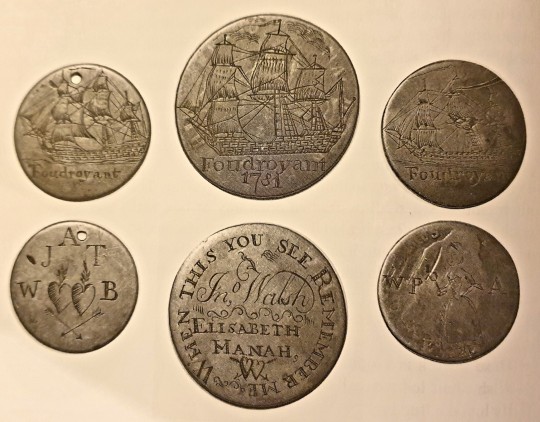
Three Foudroyant token, late 18th century- made by a Sailor for his comrades (c) Sim Comfort
Obviously, he was the most talented and gave his services to his comrades, certainly in exchange for some grog or tobacco. There were also existing engravers on shore, who later often worked for the convicts on the ships to make a coin for the mostly unsuspecting ones who stayed behind.
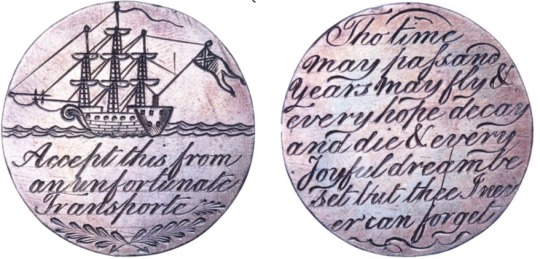
Convict Ship, Love Token also called Leaden Heart, 1833
In Portsmouth Point there was a jeweller who even hired a retired sailor to make these coins for him. This made it easier for some, as all they had to do was go into the shop with their loved one and choose a half-finished coin, which he then finished for them. But whether she really waited for him and remembered him, he could only hope.
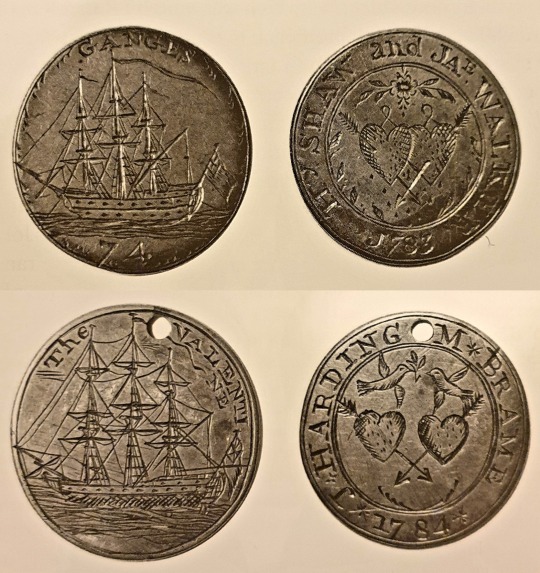
The Ships Ganes and Valentine made in a jeweller’s shop in Portsmouth Point, late 18th century (c) Sim Comfort
The officers had a similar situation, but instead of coins they usually had a miniature portrait made of themselves and gave it to the lady of their heart. In the case of married couples, the husband was often given a portrait of his wife to take with him to sea, while she kept his portrait at home.
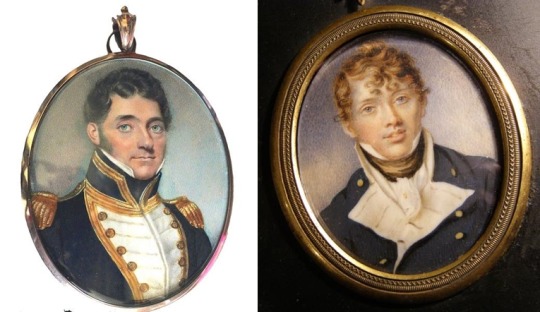
Two portraits of the Naval officers: Captain Augustus Donaldson, 1825 (left) and Midshipman Francis Harris by William Wood, 1804 (right)
For this he had to go to a painter who would then paint him in his uniform on glass, porcelain or ivory and make either a medallion or a brooch out of it. For a further surcharge, his name or a lock of his hair was then artfully placed on the back of the piece of jewellery.

Portrait of an unkown Naval Officer (possibly a lieutenant), 1770 (x)
However, the issue of this piece was the same, a token and a promise to come back.
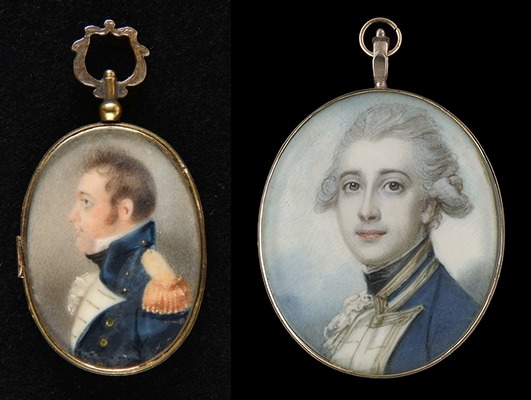
Two portraits of the Naval Officers: a unkown Captain, early 19th century (left) and possibly Captain Sir Charles Edmund Nugent, 1790 (right)
Many, however, could not keep this promise and so one or the other piece became a memento of their loved one at sea.
528 notes
·
View notes
Photo
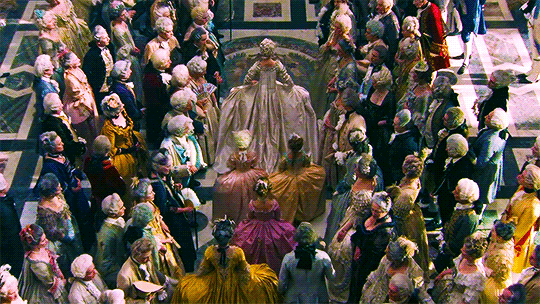
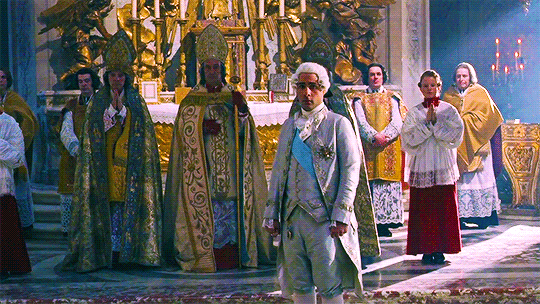
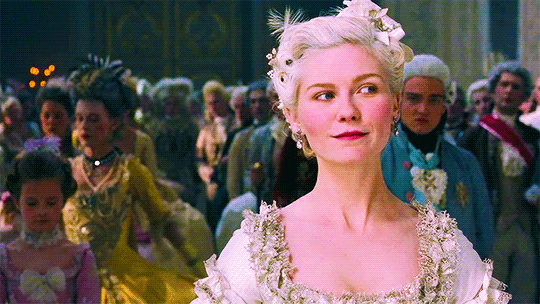
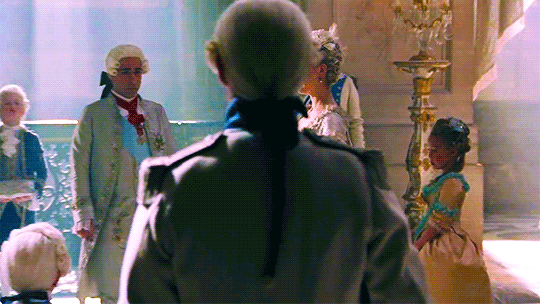
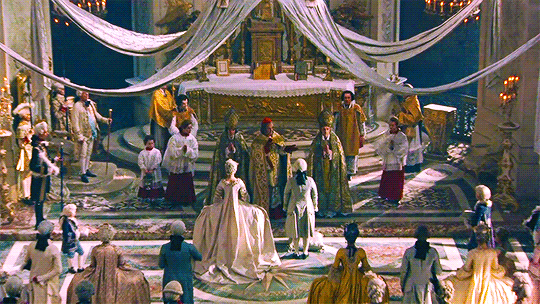
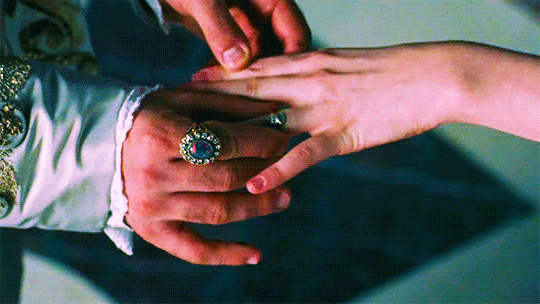
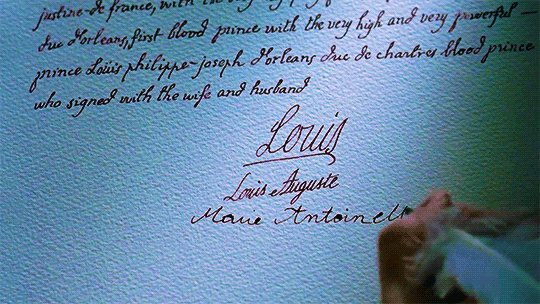
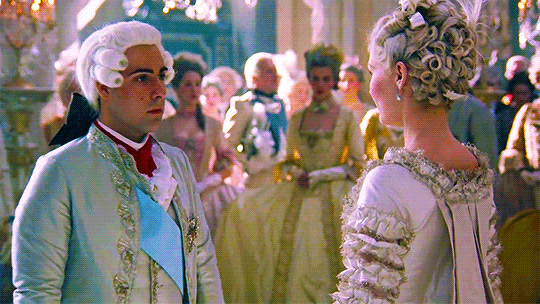
“A marriage between the two royal houses had been planned since the early 1760s, but only came about in 1770. On 19 April the wedding took place by proxy in Vienna, marrying the Dauphin and future Louis XVI, the grandson of Louis XV, to Marie-Antoinette, the youngest daughter of Maria-Theresa of Habsburg. On 16 May, the young Archduchess arrived at Versailles. She entered through the Palace gates around 10 am and was shown to the Queen’s State Apartments where she was to get ready for the official wedding in the Royal Chapel. At 1 pm she entered the King’s Cabinet. The Dauphin, dressed in the gold and diamond-covered habit of the Order of the Holy Spirit, took her hand.
The young couple crossed the crowded State Apartments followed by the King and the princes of the blood. Once in the chapel, they knelt before the altar, from where the Archbishop of Reims took over the ceremony, while the king and the royal family flanked them on their Prie-Dieus. Full of emotion, the Dauphin slipped the ring onto his wife’s delicate finger. After the ceremony the signing of the registers took place. In the early afternoon the Dauphine received her wedding gift in her apartment: a splendid carved cabinet containing an abundance of jewellery and precious objects.” (x)
#historyedit#perioddramaedit#marieantoinetteedit#history#Marie Antoinette#Louis XVI of France#*mine#*gifs
183 notes
·
View notes
Text


Diamond Bracelets, ca. 1776, French.
Worn by Queen Marie Antoinette.
Christie’s.
#diamonds#jewellery#womenswear#marie Antoinette#known wearer#1770s#1770s Jewellery#1770s bracelet#diamond bracelet#bracelet#18th century#1770s France#christie’s
2 notes
·
View notes
Text
Emerald

Emerald, known for its ravishing green hue, is a variety of the mineral beryl. It contains trace amounts of chromium and sometimes vanadium, which give this gemstone its vibrant colour. Emeralds join rubies and sapphires to form ‘the big three’ of coloured stones. This stunning gem derives its name from an ancient Persian word for green, translated to Latin as “smaragdus”, and eventually over time, changed to “emerald”. Regarded as the most sought-after stone in the beryl group, the emerald continues to enthrall the world with its lush green colour. With a hardness rating of 7.5 to 8 on the Mohs scale, emeralds make exceptional gemstones for all types of jewellery.

Ancient civilisations of Africa, Asia and South America were fascinated by emeralds ever since they were first discovered. The oldest emeralds in the world can be found in Zimbabwe, while Colombia is currently considered to be the best-known source for the ‘deep green’ variety of this gemstone. Brazil and Zambia are also regarded as the leading sources for fine-quality emeralds.
Naturally flawless emeralds are very rare and extremely valuable. Very often, emeralds with minute flaws are preferred over the flawless ones as they are considered to be more authentic. It has become a common industry practice to treat emeralds with oil or synthetic lubricants for enhanced clarity. Earrings and pendants offer a great way to showcase the beauty of this mesmerising gem. Additionally, the captivating charm of emerald engagement rings has made it a popular choice among couples across the world.

Emerald is the birthstone for those born in the month of May. A symbol of rebirth, it is said to promote foresight, good fortune and youth. Emeralds are also believed to encourage growth, peace and balance. Green, by nature, is the most calming of all the hues on the colour wheel, and emerald with its soothing green colour offers relief from eye strain and stress. This gem was often used to decorate sacred images as well.

j.miller
According to Rabbinic legends (the mainstream form of Judaism), God had granted King Solomon four precious stones that gave him the power to rule over all creations. One of these stones was an emerald. It was also believed that this gem protected the wearer from evil spells, and also gave the ability to foresee the future.

Throughout history, emeralds have been prized for their rarity and beauty. The Incas used them in their jewellery as well as in their religious ceremonies for over 500 years.
One of the earliest known emerald mines was located in Egypt. Cleopatra, who’s believed to have been fascinated by the stone, used it in her adornments. The Egyptians also often buried emeralds with mummies with the hope that the stone would provide them eternal youth in the afterlife. Another interesting legend states that Roman Emperor, Nero watched the gladiator fights through an emerald, as the gem possessed the ability to soothe the eyes. This precious stone was also associated with Venus, the Greek goddess of love and beauty.
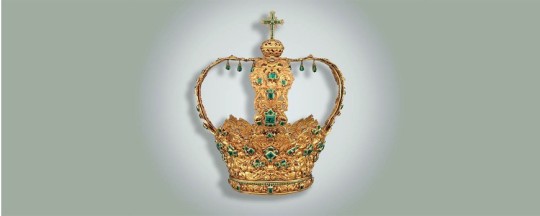
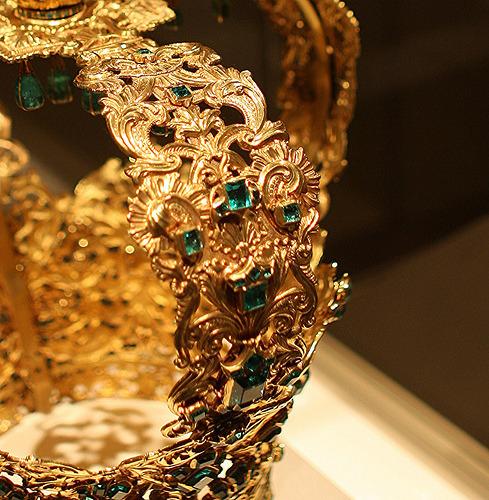
Crown of the Andes is often viewed as the largest collection of emeralds in the world, originally made for the life-size statue of the Virgin in Colombia. It was made back in 1660s when diadem was manufactured and later modified when arches were added around 1770s. It includes emeralds taken from the Inca Emperor Atahualpa and is made from 18-22 carat gold. There are overall 450 emeralds on it. The largest of which is the “Atahualpa Emerald” that has impressive measurements of 15.8 by 16.15 millimetres.- 9gems.in
The vivid green hue of the emerald is often compared to lush green landscapes. Due to its green countryside, Ireland is often referred to as the Emerald Isle. Similarly, Seattle, located in the US state of Washington is called the Emerald City due to the greenery that surrounds it. This stunning gem has also featured in some of the world’s most iconic pieces of jewellery, including the necklace of Queen Marie Jose (the last royalty of Italy) that showcases around 50 stunning emeralds, and diamonds as well.
Although an emerald is an excellent gemstone for most types of jewellery, it is more fragile than other forms of beryl. Emerald requires careful handling due to its naturally included and flawed formation. There’s a high possibility that it may develop additional internal cracks if subjected to extreme temperature change or rough impact. Extra care should, therefore , be taken while handling the precious emerald.
Cedar oil, which is a colourless and viscous product from cedar trees, is used for treating emeralds. This oil is available in a very pure form and is beneficial for filling the fractures in an emerald. However, penetration into the tiny cracks of the emerald is difficult, as cedar oil is extremely sticky. For this reason, heat and pressure are sometimes utilised for better results. This process involves cleaning the emeralds and locking them inside a heated hydraulic cylinder with pure cedar oil. While the heat causes the cedar oil to liquefy, the pressure facilitates penetration into the tiny cracks of the gem. Once the stones are cooled, the cedar oil returns to its thick, viscous state and remains intact unless ultrasonic cleaners, excessive heat or harsh solvents are used.

picture royalexhibitions.co.uk
The “Vladimir Tiara” that was a favourite piece of Queen Mary, was inherited by Her Majesty Queen Elizabeth II, in 1953, according to the last will left by Queen Mary. The Vladimir tiara belongs to the personal collection of Queen Elizabeth II
The colour is the most important feature that determines the quality of an emerald. Other factors include cut, clarity and carat weight.

Emeralds in bluish green to deep green, with not a very dark tone and vivid saturation are the most preferred. The relative amounts of chromium, vanadium and iron determine the colour of the stone. Emeralds that are highly transparent, devoid of any eye-visible colour zoning are extremely sought-after. An evenly distributed colour further elevates the overall appeal and value of the gemstone.
Emeralds are known to have visible inclusions, which are often described as garden-like or mossy. These inclusions are also referred to as ‘jardin,’ the French word for garden. The transparency and clarity of emeralds are closely linked. Eye-visible inclusions are generally accepted, but if these inclusions impact the transparency and clarity, it drastically reduces the value of the emerald.
Emeralds are susceptible to damage during polishing, cutting, setting and even careless daily wear. The ‘emerald cut’, also known as a trap-cut or step-cut, was specifically designed for emeralds.

jewelry secrets
It protects the gem from mechanical strain and chipping. This cut (also used for other gemstones) helps maximise the hue, tone and saturation of the emerald, thereby enhancing its overall beauty. Besides the emerald cut, this gemstone is available in several other shapes, including oval and round.

Emeralds come in a wide variety of sizes. While emeralds in museums weigh hundreds of carats, there are also some that weigh a fraction of a carat. The smallest carat weights range from 0.02 to 0.50. Emeralds that weigh 1 to 5 carats are popular as centre stones.
The Chalk Emerald

The superb clarity and colour of the Chalk Emerald ranks it among one of the world’s finest Colombian emeralds. This 37.8-carat emerald exhibits the velvety deep green colour that is highly prized. According to legend, the Chalk Emerald was once the centrepiece of an emerald and diamond necklace belonging to a Maharani of the former state of Baroda, India. It originally weighed 38.4 carats, but was recut and set in a platinum and gold ring designed by Harry Winston, Inc., where it is surrounded by 60 pear-shaped diamonds totalling 15 carats. It was donated to the Smithsonian by Mr. and Mrs. O. Roy Chalk in 1972 and is on display in the Gem Gallery at the National Museum of Natural History in Washington DC.
Diadem of the Duchess of Angoulême Marie Thérèse of France
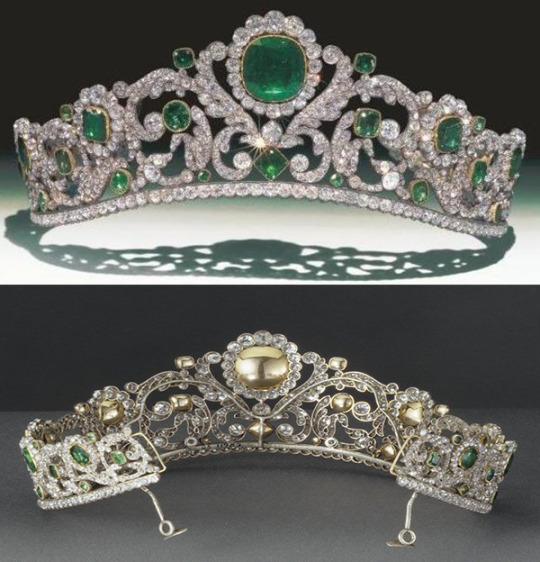
The history of this exquisite tiara is almost as complicated as that of its famous owner, the Duchess of Angouleme. Its value is immense not only because of the exceptional stones used for its creation but also because of the fact it is one of the few pieces of jewellery of the period that remain in their original state.
This tiara was commissioned in 1819 by Louis-Antoine, the Duke of Angouleme for his wife Marie-Therese, the Duchess of Angouleme. According to Bernard Morel’s masterpiece “Les Joyaux de la Couronne de France” (Crown Jewels of France). The final work on the tiara was completed in late 1819 or early 1820. After a long list of owners the diadem finally became the property of the Louvre Museum, where it is on display today.
The Moghul Emerald

Indian culture has a long tradition of appreciating gems and jewellery, and emeralds were no exception. The rulers of India were passionate about the green gem which was supposed to bring good luck. One of the most unique artefacts from India is the Moghul Emerald. Dating from 1695, The Moghul Emerald is a 217.80 carat square gem which was carved on both sides. The front side features an elegant Arabic script with a Shi’a Muslim prayer. On the reverse is a naturalistic floral carving design of a rosette surrounded by poppies. As the Moghul rulers were Sunni Muslim, the carved emerald talisman is not thought to have belonged to the Emperor himself, but rather to one of his officers. The gem itself is believed to have been mined in Colombia. It was sold at auction by Christie’s of London in 2001 for $2.2 million.
The Guinness Emerald Crystal
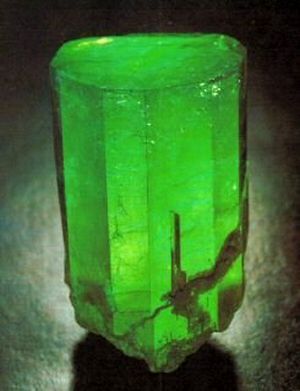
The Guinness Emerald Crystal was discovered in the Coscuez emerald mines. It is one of the largest gem-quality emerald crystals in the world—1759 carats—and is the largest emerald crystal in the collection of emeralds belonging to the Banco Nacionale de la Republica in Bogota, Colombia. The origin of the name Guinness is not known, but the elongated, 1759-carat, bright green crystal undoubtedly had all the credentials to enter the Guinness book of world records as the largest gem-quality emerald in the world at least for some years until it was surpassed by other larger natural emerald crystals. The colour of the emerald is a bright green colour with a slightly yellowish undertone, characteristic of emeralds from the Coscuez emerald mines.
The Seringapatam Jewels
One of the most breathtaking suites of emerald jewellery in existence is the Seringapatam Jewels, which is housed at the Victoria and Albert Museum in England. The ornate set consists of a necklace, brooch, bracelet, and pair of drop earrings created from emeralds, diamonds, gold, and platinum. The emeralds were originally a reward given to British Major-General George Harris, following a victory at the Battle of Seringapatam in India in 1799. The emeralds remained in the family, and were eventually set into the spectacular suite of jewellery for the wife of the fourth Lord Harris, Lucy Ada. The gems were made into jewellery over a period of years, beginning with their marriage in 1874 and continuing until 1887.

source https://www.angara.com/education /http://www.gemportjewellers.ca
Thank you so much!😊❤️❤️❤️❤️❤️
38 notes
·
View notes
Photo

Mary Nisbet, Countess of Elgin (c.1804). Francois-Pascal-Simon Gerard (French, 1770-1837). Oil on canvas. Scottish National Gallery.
Mary Nisbet's dark hair and velvet dress complement her light skin. The artist has carefully defined the delicate ruff of the high lace collar, the touches of gold in the embroidered decoration and her fine jewellery. The portrait was probably painted in Paris where Mary's husband, Thomas Bruce, 7th Earl of Elgin, was British Ambassador. She interceded successfully on his behalf when he was imprisoned in 1803, after Napoleon revoked the Treaty of Amiens, ending the temporary peace between Britain and France.
57 notes
·
View notes
Text
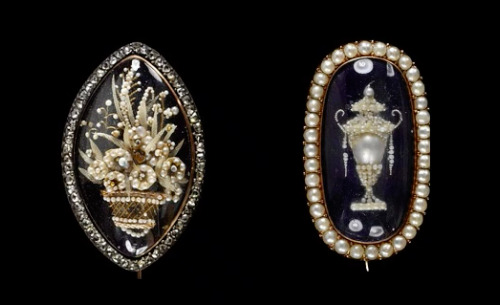
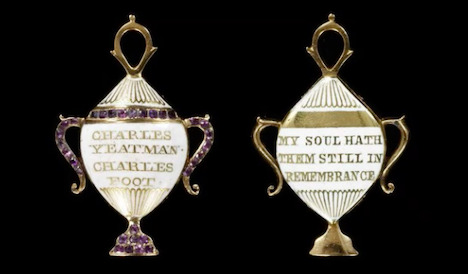
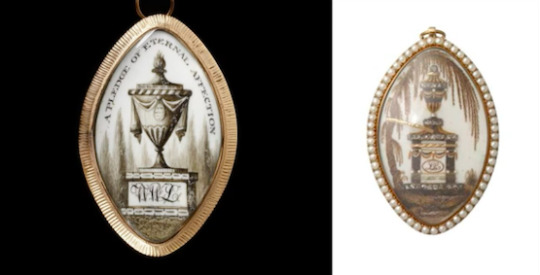
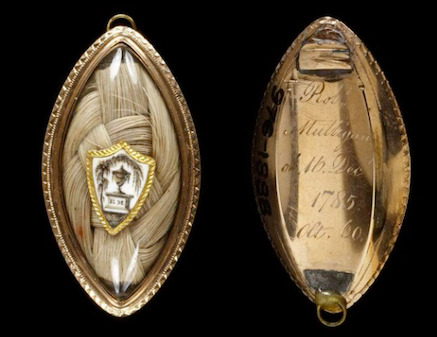
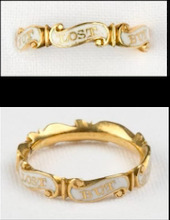

"Mourning" brooches, lockets, pendant and rings (circa 1770-1800) presented in “A History of Jewellery: Bedazzled (part 4: Rococo Elegance)” by Beatriz Chadour-Sampson - International Jewellery Historian and Author - for the V&A Academy online, February 2024.
#conferences#inspirations bijoux#memento mori#gothic#email#XVIIIe siècle#ChadourSampson#V&AAcademy#Victoria&AlbertMuseum#grenat#perle
1 note
·
View note
Text

pippa’s outlander au facts bc i guess this is just my life now:
basic family background still applies: from just outside stirling, scotland; father is a viscount and she is titled; had a really suffocating time and was treated terribly by p much every man in her life except ned.
she and ned plan to run away when they’re in their early 20s, so that they can be free. she takes all the jewellery that is legally hers --- some of which she sells so she can buy passage for them to the americas, and the rest she sews into her stays so that it’s not easily stolen --- and more books than she probably should. she takes fewer clothes bc everything she has is Obvious Noble Wear and she doesn’t want to be that anymore, so she prob buys some clothes somewhere along the way.
she also takes ned’s last name, shelley, and they call themselves brother and sister. it’s what they are, after all, in everything but blood. everyone at home definitely think they’ve eloped, tho.
end up in wilmington in the early 1770s? probably?? and from there learn about fraser’s ridge, where they settle. scots! pippa struggles a LOT at first. she’s an aristocrat who’s had everything done for her her entire life and she’s not suited to working the land in the slightest. she’s miserable. she takes in sewing for a while, but she’s not great at that, either; she only really learnt needlepoint/embroidery and not making practical clothes. she learns, at least for herself and ned.
what she does have is a lot of knowledge, and an ability to share it. as more families come to the ridge, pippa finds herself a little niche as a teacher, both to the children (flexibly with the farming seasons when they’re needed to work the land) and to any illiterate adults who want to learn to read. and she’s very, very content doing this.
she never marries, never gets engaged, never has children. she does have far more books than any land tenant should own, but she’s got the money for them.
there’s probably some issue at some point where her family try to find her but she’s not used her real name since she was in scotland and she’d rather die than go back so they can go fuck themselves.
2 notes
·
View notes
Photo
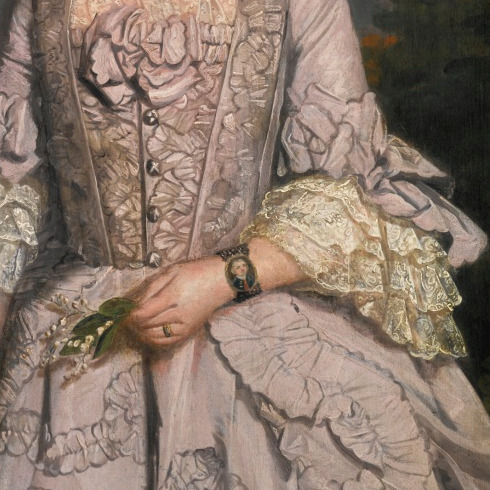
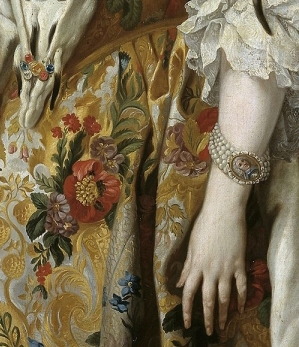
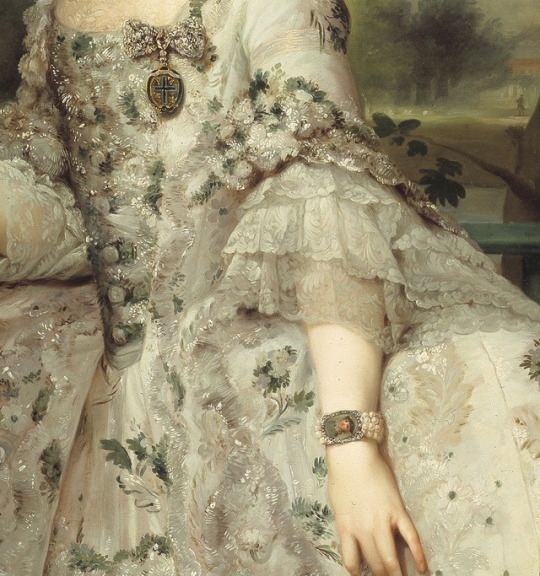
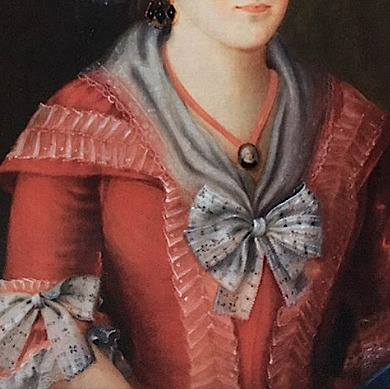
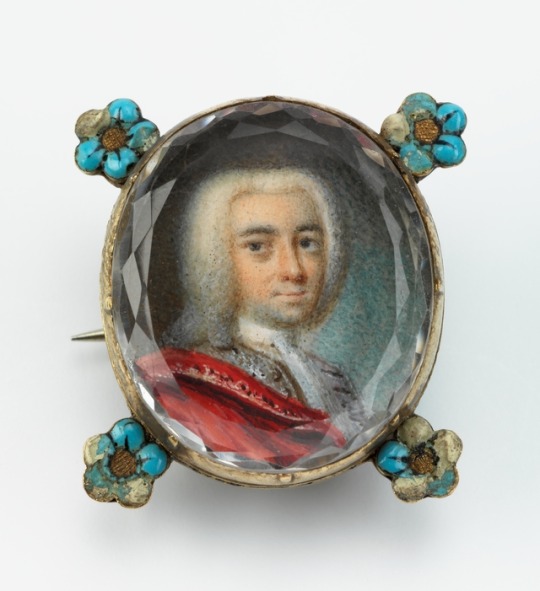


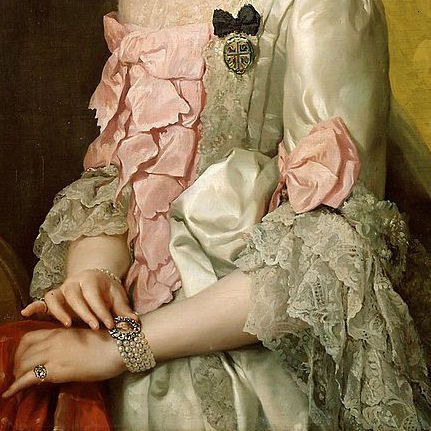

Miniature portrait as jewellery in 18th century portraits
Grace Newman, painted by Thomas Beach between 1770 and 1790. She wears a portrait of her husband John Newman. From Sotherby’s.
Isabel de Farnesio, queen consort of Spain, painted by Louis-Michel van Loo ca. 1739. From Prado, Madrid.
Maria Luisa de Parma, painted by Anton Rafael Mengs ca. 1765. From Prado, Madrid.
Maren Christine Holbye, painted by Peder Aadnes ca. 1786. She wears the portrait of her husband, vicar Poul Christopher Holbye, around her neck. From Blomqvist Auctions.
Portrait of Johan Georg Büchler, 1750s. The miniature portrait is mounted on a brooch with blue forget-me-nots. From The National Museum in Oslo, originally belonging to Helene Cathrine Büchler, his daughter.
Catherine Vedastine von den Driesch, painted by an unknown French painter in the 1770s. She wears a miniature portrait of her husband Louis Claude de Bretteville. From The National Museum in Oslo.
Elisabeth de Badorot, Countess de Saint Germain, painted in the 1770s by an unknown French artist, though I believe this is a newer copy. She wears a portrait of her husband on the wrist. Sold on eBay.
Maria Luisa de Bourbon, painted by Anton Raphael Mengs ca. 1764. It was made as an engagement portrait, and the miniature on the bracelet shows her fiancé Leopold, Grand Duke of Tuscany. From the Kunsthistorisches Museum in Vienna.
Unknown Italian lady, painted in the 1780s by an unknown Italian (possibly Venetian) master. From Walter’s Art Museum, Baltimore.
Judging from this and from other portraits I have seen, wearing the miniature portrait as a bracelet, and preferably on a pearl bracelet, seems to have been much in fashion. But as shown here, it could also be worn around the neck, on a chain, or as a brooch. The important thing was to display the loved one to the world, and yet wear the portrait on an intimate place near the chest or wrist.
#miniature portrait#brooch#bracelet#historical jewelry#rococo fashion#historical fashion#18th century fashion#forget me not#john newman#louis michel van loo#anton rafael mengs#peder aadnes
427 notes
·
View notes
Text
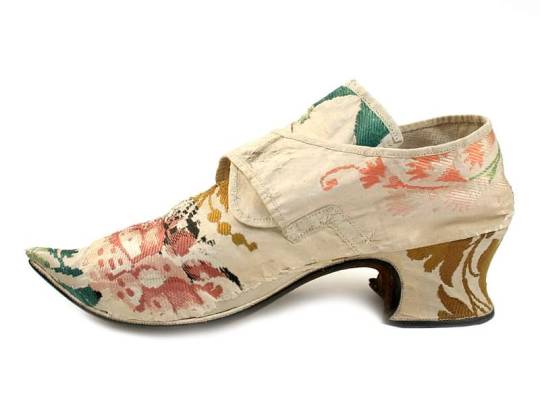

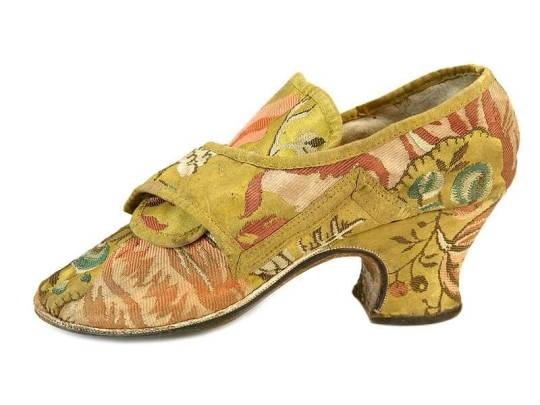
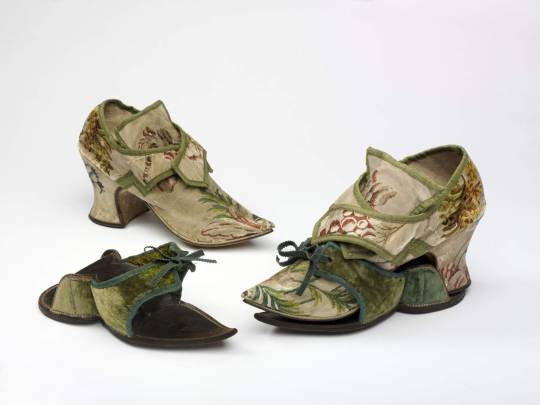
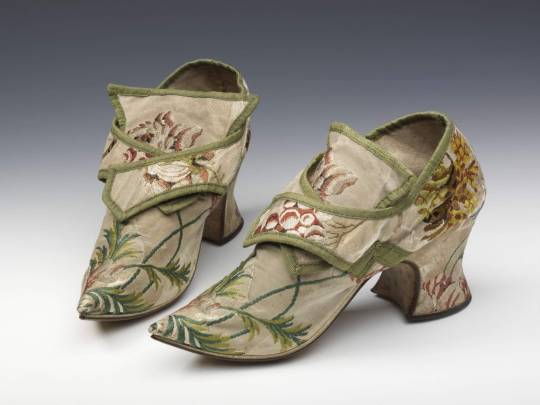

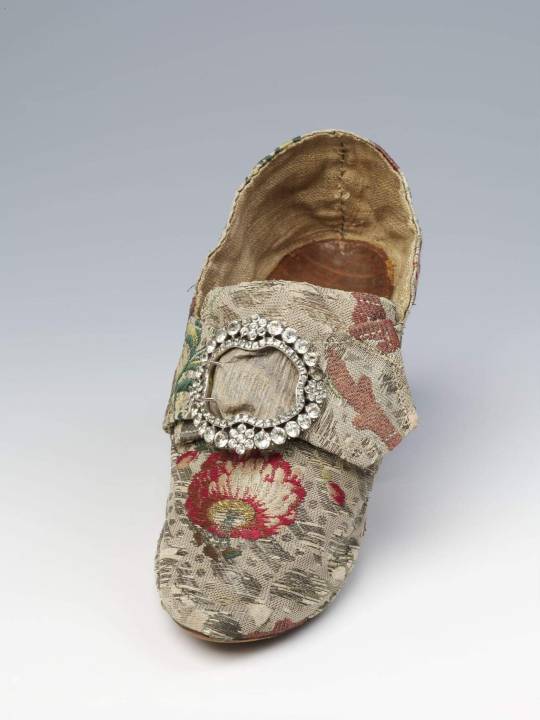
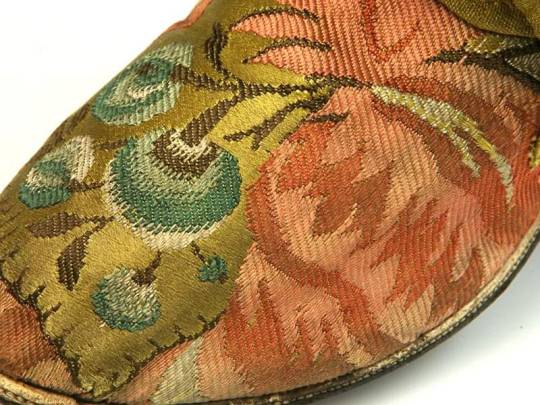
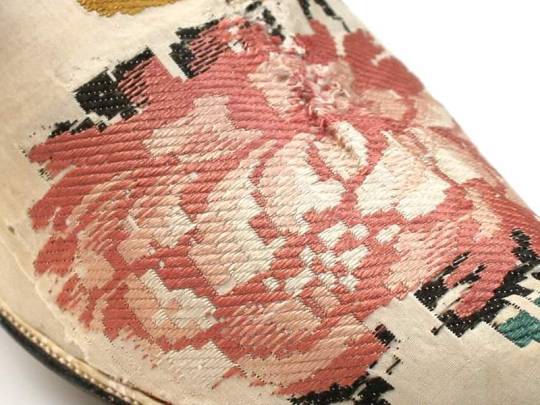
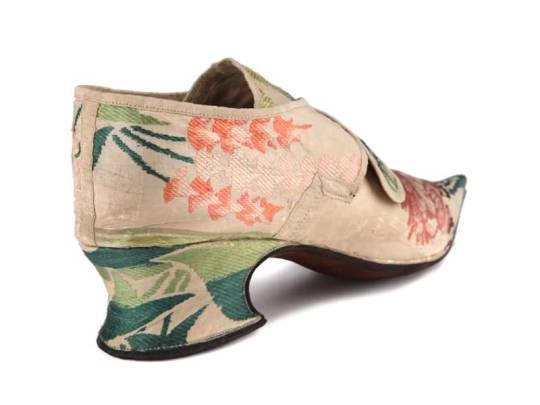
D'Artagnan.
" English eighteenth century luxurious shoes from ca 1710-1770 .The basic construction with a high vamp and latchets to fasten them with a buckle is common to all. They have the same sew on welted leather sole construction , pointed or almond shape toes and a medium height thick Louis heel. The shoes were made with no differentiation for the left or right foot and are now referred to as "straights". Buckles were highly regarded as separate accessories; even jewellery and transferred from one pair of shoes to another. Pattens were used to protect the delicate shoes when going outside.
See pattens #5 and #6
#1 Lady's brocaded silk shoes with a flowery design.
Great Britain unknown maker ca 1735 © shoe_icons
#2 English Shoes 1760 1770 made in London shoe in silk with metal thread with buckles .There is no mention of the buckle which could be silver with paste stones. Had they been diamonds I am sure they would have been mentioned and included a close up photo © V&A
#3. English silk shoes in yellow and green , with a woven design of foliage and fruit, designed for buckle fastening. Great Britain. c. 1740 © shoe_icons
#4. English shoes made in London from brocaded Spitalfields silk with velvet pattens 1735–45.
Indoor shoes for women were usually made of patterned silk although it was very rare for them to match the fabric of the gown worn with them. Lack of wear suggests that shoes like this went with a luxurious lifestyle and were perhaps worn only indoors , in sedan chairs and carriages or possibly outdoors in dry conditions .
The velvet pattens would not have withstood any soiling, so they must have been for a woman who did not need to navigate the filthy streets.They were status symbols and proclaimed that the wearer was wearing expensive shoes underneath.© V&A
#5 Shoes as # 4
#6 Lady’s pattens made of green velvet and cherry-coloured leather, decorated with a twill stripe ribbon and embroidery made in Great Britain. c. 1710-1720 © shoe_icons (not shown)
#7 Alternative view #6 showing the leather inner construction and placement for the shoe
#8 as #2
#9 shoe Detail #2
#10 detail #1
#11 Heel detail #1
Love D'Artagnan xxx".
0 notes